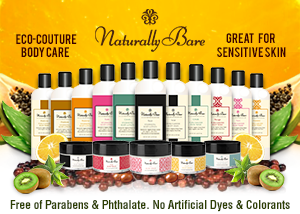When the Solution to Cleaning Involves No Cleaning at All
By Robert Kravitz
Green cleaning has evolved over the past decade. Originally, the big emphasis of Green cleaning was using chemicals that had a reduced impact on the user and the environment. And over the years it has evolved so that we now have Green floor machines, carpet extractors, and other cleaning tools that have been reengineered so that they also have less negative impact on the environment.
And now, in just the past couple of years, we in the professional cleaning industry are witnessing what many believe will likely be the next step in Green cleaning: the use of tools and equipment that require no cleaning chemicals at all. This is not an entirely new concept, because some forms of no-chemical cleaning have been around for some time.
For instance, steam pressure cleaning is commonly used in the professional cleaning industry, for it has proved be successful on cleaning such items and gym equipment, vinyl surface coverings, and commercial foodservice equipment such as food carving tools; it has even been used to help eradicate bedbugs. The use of steam for cleaning is not new. It is believed that an Italian bartender more than 100 years ago discovered that steam generated by a cappuccino machine helped remove lipstick stains from glassware.
However, we are referring to professional steam cleaning machines, not the type sold in hardware stores or big-box retailers. These systems generate steam at very high temperatures, greater than 240 degrees (F), which essentially melts off, breaks down, or removes most soils, grime, organic and bacterial contaminants, etc.
A more controversial form of no-chemical cleaning, which appears to be growing in use, especially for cleaning and sanitizing such things as industrial equipment and food-processing equipment, is ozone. It is already used frequently in the professional cleaning industry to help eliminate odors.
Ozone produces no toxic by-products and, if used properly, is harmless to living things. However—and the reason for the controversy—it must be used carefully. For instance, once the machine is in operation, people and living things must be removed from the area where the system is operating. Although it is not difficult to operate an ozone generator, users must be thoroughly trained on its use and application.
Ozone generators release airborne molecules and atoms that proponents claim can be 50 percent more effective than using chlorine bleach to clean surfaces. It is used widely to help clean and disinfect water and, as referenced earlier, some of the largest commercial food-processing facilities in the United States use ozone to clean and disinfect conveyor belts and other tools and equipment used in food processing.
Although steam and even ozone are used in the professional cleaning industry and do qualify as examples of no-chemical cleaning, their use is rather limited, especially when it comes to the big picture of everyday cleaning such things as floors, restroom fixtures, and tile and grout. Fortunately, no-chemical technologies have been introduced that are proving to be effective in these situations as well.
Probably the most significant no-chemical technology used for everyday cleaning, and one that surpasses the U.S. Environmental Protection Agency (EPA) requirements to be a “sanitizing device” even without the use of chemicals, is what is often referred to as no-touch or spray-and-vac cleaning.
Actually developed more than a decade ago, these machines are essentially indoor pressure washers. They use high-pressure streams of water to loosen soils and contaminants from surfaces. Both the moisture and the soils are then vacuumed up, completely removing them from the area cleaned.
However, there are exceptions. A chemical agent may be necessary using this type of equipment to clean heavily soiled surfaces, and in situations where a health risk is present, appropriate EPA-registered disinfectants should be employed. But for most other common cleaning tasks, this method will clean and sanitize surfaces and do so without the use of chemicals.
What Green cleaning will evolve into next is somewhat uncertain. Probably the surest thing we can say is that Green cleaning will grow in the professional cleaning industry. As a matter of fact, in a short time, Green cleaning and no-chemical cleaning systems will likely become the norm with the use of conventional cleaning chemicals, tools, and equipment employed only when Green equivalents are not available. For those advocating safer and healthier ways to clean, this is good news.
*In order for a cleaning tool to be recognized as a sanitizing device, there must be a greater than 99.9 percent bacterial reduction on surfaces when using it without chemical. The designation of sanitizing device does not apply to all spray-and-vac cleaning tools.
Robert Kravitz is a former building service contractor and how a writer for the professional cleaning industry. He may be reached at [email protected]


CONNECT WITH US